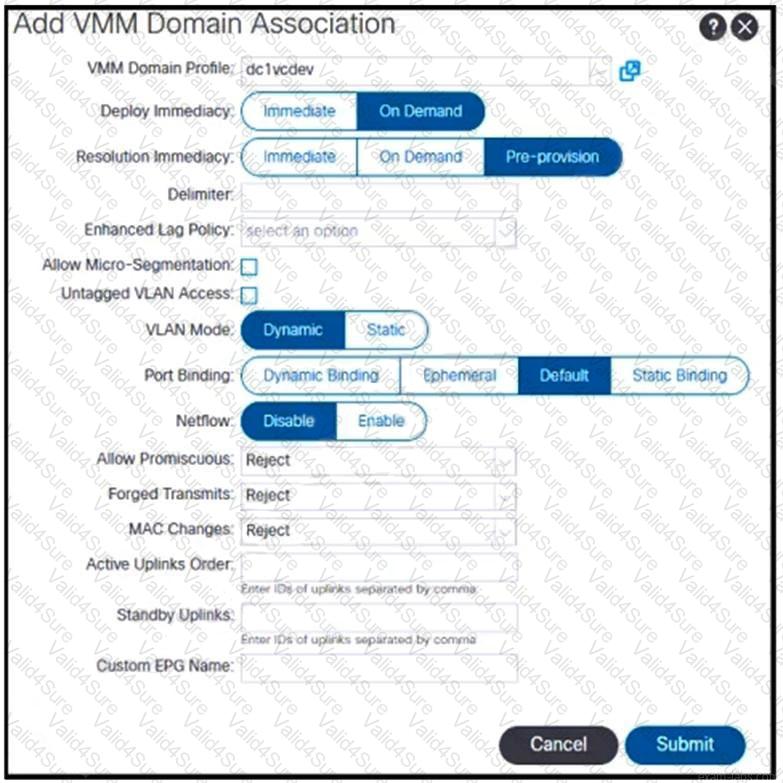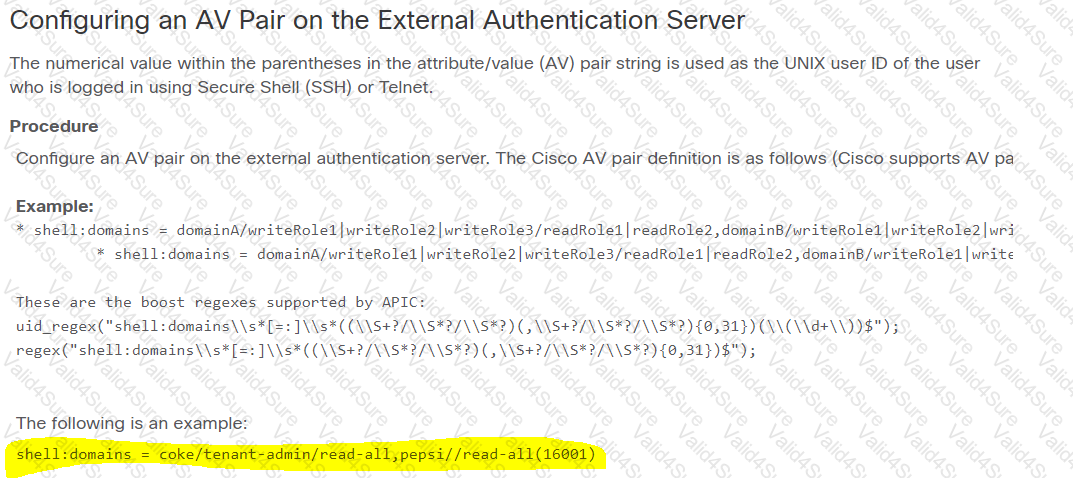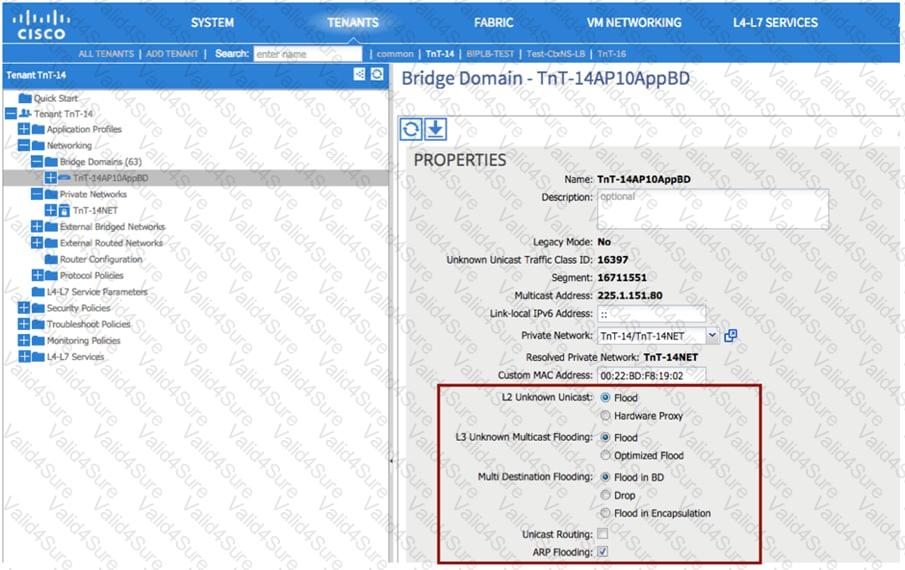300-620 Exam Dumps - Implementing Cisco Application Centric Infrastructure (300-620 DCACI)
A customer implements RBAC on a Cisco APIC using a Windows RADIUS server that is configured with network control policies. The APIC is as follows:
Tenant = TenantX
Security Domain = Tenantx-SD
User = X
The customer requires User X to have access to TenantX only, without any extra privilege in the Cisco ACI fabric domain. Which Cisco AV pair must be implemented on the RADIUS server to meet these requirement?
An engineer has set the VMM resolution immediacy to pre-provision in a Cisco ACI environment. No Cisco Discovery Protocol neighborship has been formed between the hypervisors and the ACI fabric leaf nodes. How does this affect the download policies to the leaf switches?
The existing network and ACI fabric have been connected to support workload migration. Servers will physically terminate at the Cisco ACI, but their gateway must stay in the existing network. The solution needs to adhere to Cisco’s best practices. The engineer started configuring the relevant Bridge Domain and needs to complete the configuration. Which group of settings are required to meet these requirements?
Cisco ACI fabric has three different endpoints S1, S2. and S3. These endpoints must communicate with each other without contracts. These objects have been created in APIC:
•Two EPGs named DNS_EPG and Database_EPG
•Two application profiles. PROD_App and Data_App
•Two bridge domains DNS_BD and Database_BD
•PROD_APP and Database_BD mapped to Tenant PROD
•Data_App and DNS_BD mapped to Tenant Data
Which set of actions completes the fabric configuration?
An engineer must configure VMM domain integration on a Cisco UCS B-Series server that is connected to a Cisco ACI fabric. Drag and drop the products used to create VMM domain from the bottom into the sequence in which they should be implemented at the top. Products are used more than once.


Refer to the exhibit. The EPG-100 must be extended to the vCenter as a port group with a tagged VLAN ID of 100. Which set of actions accomplishes this goal?
Which two actions extend a Layer 2 domain beyond the ACI fabric? (Choose two.)
An ACI engineer is implementing a Layer 3 out inside the Cisco ACI fabric that must meet these requirements:
The data center core switch must be connected to one of the leaf switches with a single 1G link.
The routes must be exchanged using a link-state routing protocol that supports hierarchical network design.
The data center core switch interface must be using 802.1Q tagging, and each vlan will be configured with a dedicated IP address.
Which set of steps accomplishes these goals?


